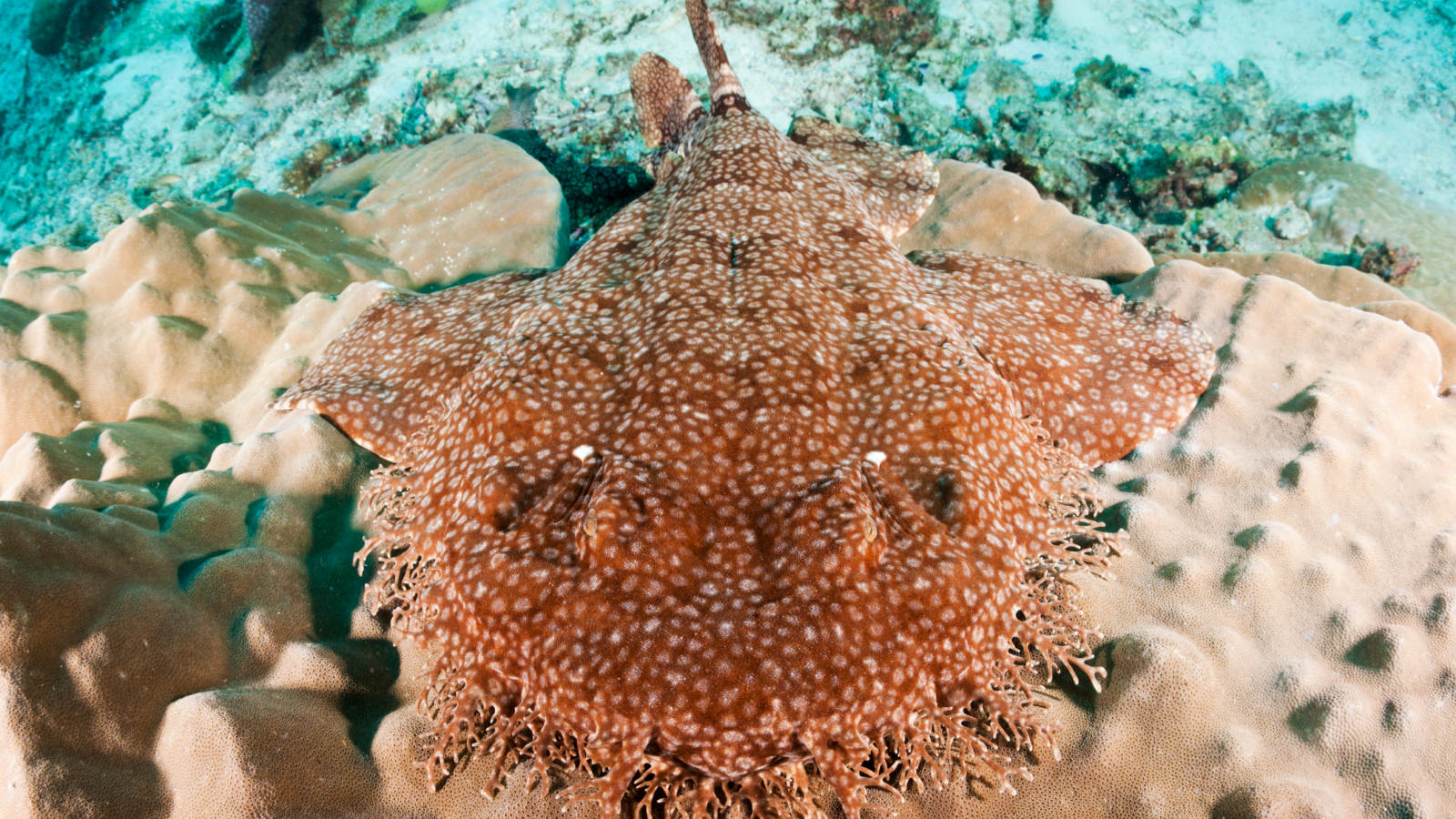
Name: Tasselled wobbegong (Eucrossorhinus dasypogon)
Where it lives: Western Pacific Ocean, off the coasts of Northern Australia, New Guinea and Indonesia.
What it eats: Fish, crabs, squid, cuttlefish, octopus and other sharks.
Why it's awesome: The tasselled wobbegong is a master of disguise.
These carpet sharks, which grow up to 4 feet (1.2 meters) long, are able to virtually disappear into the ocean floor thanks to their wide, flat bodies and dark, blotchy coloring, which help them blend into the reef. They also have coral-like lobes of flesh that form a beard-like fringe around the head and chin, which breaks up the wobbegong's outline to add an extra layer to its camouflage.
The species name dasypogon comes from the Greek word dasys, meaning "hairy," and pogon, which translates as "beard."
Related: The ancient deep-sea creature that can can choke a shark by spewing slime
Their ability to blend into their surroundings makes them dangerous predators. During the day, wobbegongs rest under reef ledges or in caves. They use a small, whisker-like sensory organ called a barbel, located in the nostrils, to sense their environment and ambush prey that comes too close. These sharks also wave their tails to imitate the movement of a small fish, which can lure in unsuspecting victims.
But at night tasselled wobbegong sharks really come to life, perching on the reef and attacking passing prey. When they spot a target, they lunge upwards and suck the animal into their giant mouths, before clamping down with powerful jaws and sharp, needle-like teeth.
These fish can also dislocate their jaw to eat larger prey — including other sharks. In 2011, while carrying out a survey of fishes off the Great Barrier Reef in Australia, marine biologists spotted a tasselled wobbegong eating a brown-banded bamboo shark (Chiloscyllium punctatum) that was 80% its size.
Wobbegongs pose very little threat to humans but have been reported to occasionally bite divers who come too close. The Florida Museum's International Shark Attack File records 31 unprovoked wobbegong (of various species) attacks since 1580, but none were fatal.
The wobbegong's camouflage also helps to protect them from predators, as they may be eaten by other marine animals, including larger sharks.







